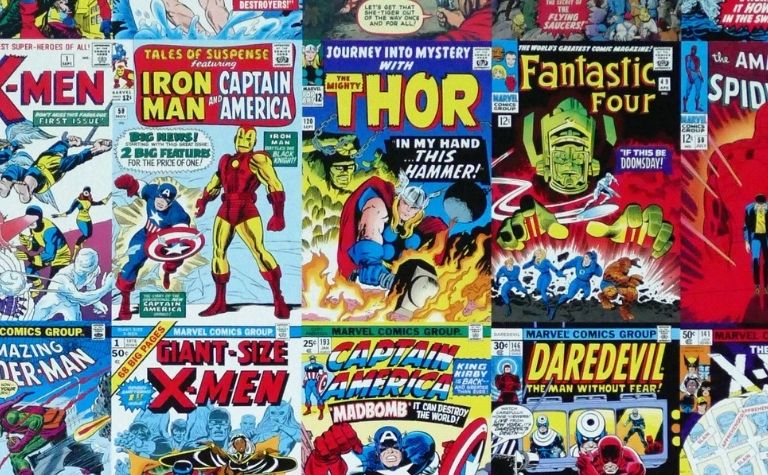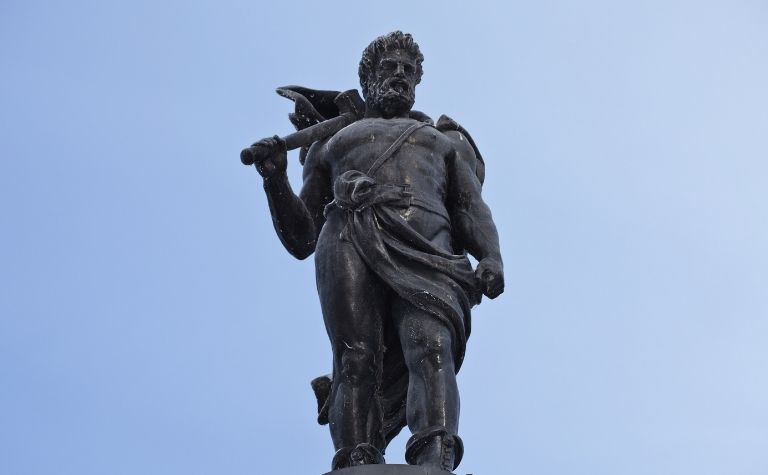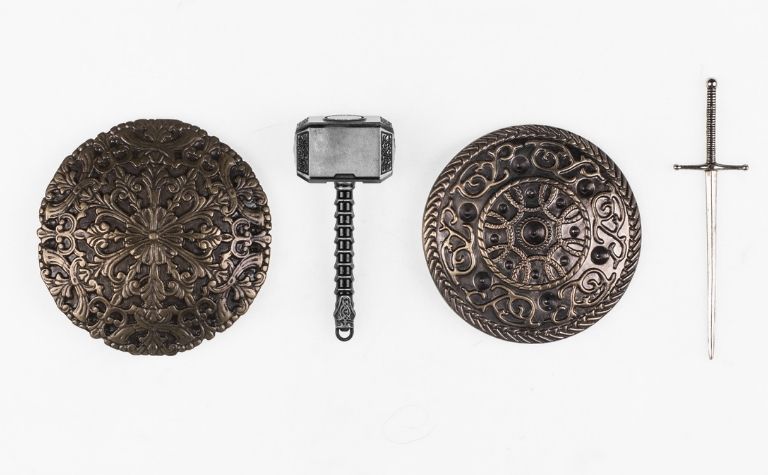The Norse god Thor is an icon of contemporary pop culture, celebrated in numerous comic books, movies, and video games.
His enduring mass appeal has given rise to speculation on the authenticity of these images.
Whether the Thor of Norse mythology was fat or not is one of these questions.
Thor is not fat in Norse mythology, but he was brawny. However, bodies that epitomized strength for early Germanic peoples are now considered overweight.
So, the implication that Thor was fat reveals more about contemporary attitudes to bodies than it does about classical representations of the god.
This article will examine how Thor has historically been depicted in Norse mythology and discuss how the controversy surrounding his physique arose in the first place.
Also see Was Thor a Blacksmith? to learn more.

What Does Thor Look Like in Norse Mythology?
In Norse mythology, Thor looks like a powerfully built middle-aged man with wild red hair and an unruly beard.
He is portrayed as a great warrior of immense strength, with furious red eyes hinting at a notoriously short temper.
Thor is also often depicted wielding his magical hammer, Mjollnir.
Ancient myths did not concern themselves with nuances of physiological or psychological description.
They were more interested in using action on an epic scale to reveal meaning in the world.
In general, character and psychology were shown through the dramatic twists and turns of grand narratives.
Thor is consistently described as being big and brawny. His god-like strength is said to be of superhuman proportions.
However, just how big and strong he is is not specified, leaving plenty of room for fanciful interpretation and vigorous contestation of the different representations of Thor in mass media.
Other details of Thor’s role and persona only confuse the matter further.
According to the stories, Thor was the master of natural elements, such as thunder and rain.
His hammer represented a thunderbolt, and he gave rise to the tides.
Similarly, most of the stories involving Thor showed him battling giants to defend Asgard, the realm of the gods, and Midgard, the realm of humans.
His main nemesis, Jörmungandr, was a monstrously big serpent that had Midgard bound up in its coils. [1]
Thus, the enemies he fights are uniformly formidable in size and strength.
Such grand settings for the action of the mythological stories, and their mixing of vastly different scales, necessarily left out many concrete details or were deliberately ambiguous about them.
In the face of this lack of information, artists depicted Thor to look like the most powerful version of the human body they could imagine.
As practical tests of human strength have repeatedly shown, the strongest human bodies are big and sturdy, with thick bellies and necks. [3]
It is easy to understand why they might be considered overweight by contemporary standards, but they can hardly be described as fat.
Also, see Was There a Female Thor in Norse Mythology? to learn more.

Why Did Marvel Make Thor Fat?
Marvel made Thor fat to convey the depths of his despair at failing to stop Thanos from killing half the universe’s population.
As he begins to question his self-worth, Thor takes to alcohol and binge eating. The weight that he gains is a physical manifestation of his psychological turmoil.
At the end of Avengers: Infinity War, the Titan supervillain Thanos acquired the Infinity Stones and snapped his fingers, instantly killing half the population of the universe.
Earlier in the film, he had also killed Thor’s brother Loki.
Just before Thanos executed his genocidal plan, Thor tried and failed to kill Thanos.
This failure set Thor on a downward spiral that resulted in his eventual weight gain, depicted in the subsequent movie Avengers: Endgame.
This inciting incident of failing to stop Thanos is also backed up by Thor’s larger character arc across the films that make up the Marvel Cinematic Universe.
In these movies, Thor is shown to be a bit of a braggart who is enamored of his good looks and his mighty hammer.
He is always trying to win his father Odin’s approval.
This characterization suggests that Thor lacks self-belief and uses external validation to support his inflated self-image.
Thor was not confronted with just a single failure when he failed to stop Thanos.
It caused his whole self-image to collapse. Joe and Anthony Russo, directors of both Infinity War and Endgame, thought that a physical transformation was the best way to portray this inner turmoil.
Also, see Norse Tattoos to Avoid to learn more.

How Strong Is Thor in Norse Mythology?
Thor is the epitome of strength in Norse mythology. Numerous stories speak of his many incredible feats of physical prowess.
Thor is also derived from a common archetype of several thunder-hurling Indo-European deities, all characterized by their great strength.
The Norse myths universally speak of Thor as the epitome of physical strength.
While other Norse gods, like Odin and Loki, are characterized by mental abilities, including strategy and subterfuge, Thor stands out for his incredible physical prowess.
Thor is assigned as the god of storms and thunder and is known for his violent temper, love of fighting, and great sexual appetite.
All of these are hallmarks of a common prototypical Indo-European deity, everywhere marked by great physical prowess.
Several Norse tales also directly speak of Thor’s great strength.
They describe battles with giants and the sea serpent, Jörmungandr, in which Thor uses his superhuman strength to protect the gods and humans.
One direct allusion to Thor’s great strength is in the tale surrounding his acquisition of Mjollnir, his magical hammer.
Thor is given the hammer by Loki, who obtains it by tricking the dwarf brothers Brokkr and Sindri (sometimes called Eitri), who are master craftsmen.
To prove their mettle to Loki, the brothers make him a magic hammer so heavy that no one but the god of thunder can lift it.
The implication here is that Thor possesses exceptional strength.
Another curious feature of Thor’s superhuman physical prowess is that it can be magnified further. Along with his magical hammer, Mjollnir, Thor also has a belt, Megingjörð.
When Thor puts on this magic belt, his great strength is said to be doubled.
Conclusion
Thor is portrayed as the epitome of strength. He is muscular and fierce in battle. However, there is no historical evidence that he is fat.
Also, see Who Is Ymir in Norse Mythology? to learn more.
